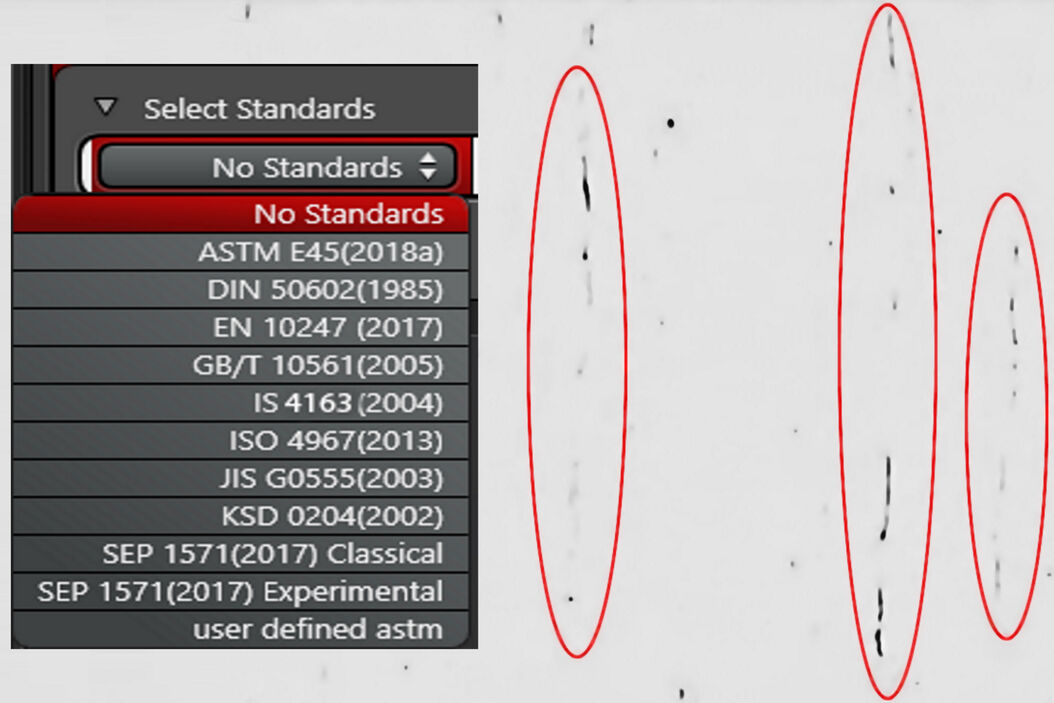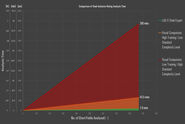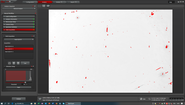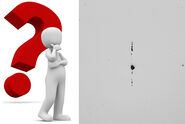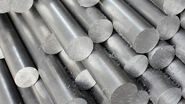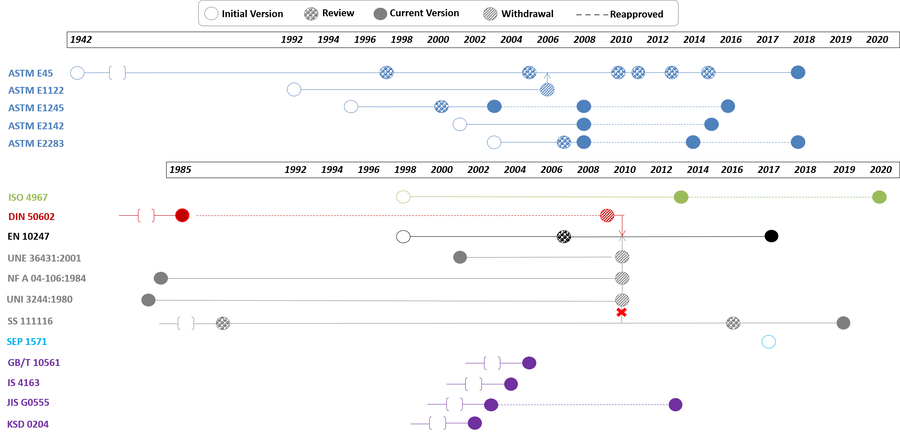
Challenges arising from standards
Multiple Changing Standards
For international or regional suppliers of steel or components and products made of steel, it is not uncommon that their users request compliance with several steel quality standards.
Because of the constantly changing standards “landscape” and the fact that different standards are never exactly equivalent, it can be difficult for suppliers to meet the requirements of multiple standards for a single batch. Suppliers can be required to report different sets of rating results for a steel or component/product batch. The results are obtained using different analysis methods described in various standards. As a result, steel samples must be analyzed and then re-analyzed in accordance with the methods of multiple standards or a systematic, reliable way of comparing results [13-14] from different standards, or even out-of-date standards, must be developed. It can also be challenging to report the results from the different standards in a clear, easy-to-understand way. Figure 2 illustrates how the requirement to comply with multiple, ever-changing steel quality standards can make the overall inclusion rating workflow more complex.
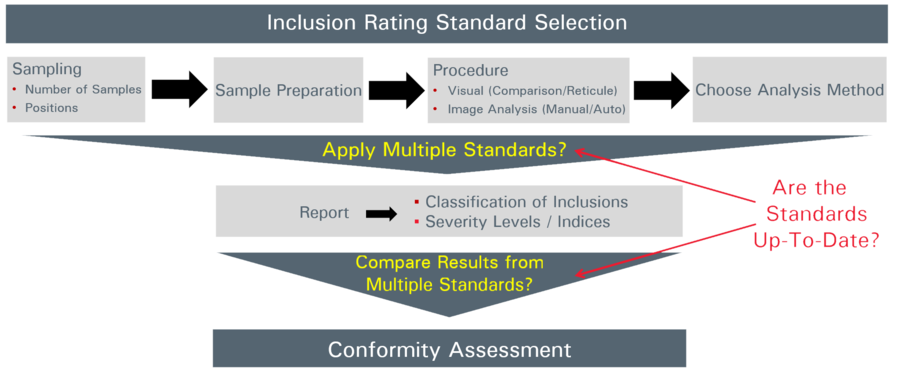
Company standards and specifications
As mentioned above, multi-national, end-product manufacturers can require their suppliers to comply with several of the international and regional steel quality standards. However, the manufacturers may also include with the standards their own company specifications. A multi-national, end-product manufacturer sharing specific company standards with its supply chain leads to the development of organizational standards.
As a result, suppliers may find it challenging to incorporate specific requirements for organizational or company reporting formats, which are non-standard for the international or regional steel quality rating community, into the current solutions used for rating non-metallic inclusions.
Overcoming the challenges: Leica steel quality rating solutions
The question now is: Are there steel quality rating solutions which help suppliers address these challenges which arise from the need to comply with multiple ever-changing standards? The answer is yes.
An example is the Steel Quality Solution Suite from Leica Microsystems. The solution combines the LAS X Steel Expert software with a high-performance Leica microscope. These solution features help suppliers overcome the challenges from rating steel with multiple standards. They enable users to:
- Comply with previous and current steel quality standards; both the original and updated versions of the multiple applied standards are kept available;
- Compare results from different versions of standards in a straightforward way; and
- Define their own standard specifications for steel quality rating.
References
- D. Diez, J. DeRose, T. Locherer, Rate the Quality of Your Steel: Free Webinar and Report: Overview of standard analysis methods and practical solutions for evaluating steel inclusions, Science Lab (2019) Leica Microsystems
- ASTM E1122-96 (2002), Withdrawn 2006, Standard Practice for Obtaining JK Inclusion Ratings Using Automatic Image Analysis, ASTM International (American Section of the International Association for Testing Materials)
- ASTM E45 - 13, Standard Test Methods for Determining the Inclusion Content of Steel, ASTM International (American Section of the International Association for Testing Materials)
- DIN 50602, Withdrawn 2010,Metallographic examination; microscopic examination of special steels using standard diagrams to assess the content of non-metallic inclusions, DIN (Deutsche Institut für Normung)
- NF A04-106 September 1984, Withdrawn 2010, Iron and steel: Methods of determination of the non-metallic inclusion content of wrought steels, Part 2: micrographic method using standards diagrams, AFNOR (Association Française de Normalisation)
- EN 10247:2017, Micrographic examination of the non-metallic inclusion content of steels using standard pictures, CEN (European Committee for Standardization)
- SS 111116 : 2016, Jernkontoret’s inclusion chart II for quantitative assessment of the content of non-metallic inclusions in metals and alloys, SIS (Swedish Standards Institute)
- ISO 4967:2013, Steel - Determination of content of non-metallic inclusions - Micrographic method using standard diagrams, International Organization for Standardization
- ASTM E1245 - 03 (2016), Standard Practice for Determining the Inclusion or Second-Phase Constituent Content of Metals by Automatic Image Analysis, ASTM International (American Section of the International Association for Testing Materials)
- ASTM E2142 - 08 (2015), Standard Test Methods for Rating and Classifying Inclusions in Steel Using the Scanning Electron Microscope, ASTM International (American Section of the International Association for Testing Materials)
- ASTM E2283 - 08 (2014), Standard Practice for Extreme Value Analysis of Nonmetallic Inclusions in Steel and Other Microstructural Features, ASTM International (American Section of the International Association for Testing Materials)
- ASTM E768 - 99 (2010) e1, Standard Guide for Preparing and Evaluating Specimens for Automatic Inclusion Assessment of Steel, ASTM International (American Section of the International Association for Testing Materials)
- Handbook of Comparative World Steel Standards, ASTM DS67B, 5th Edition, John E. Bringas, Ed. (ASTM International, 2004)
- Stahlschlüssel - Key to Steel, 25th Edition (Verlag Stahlschlüssel Wegst, 2019)
